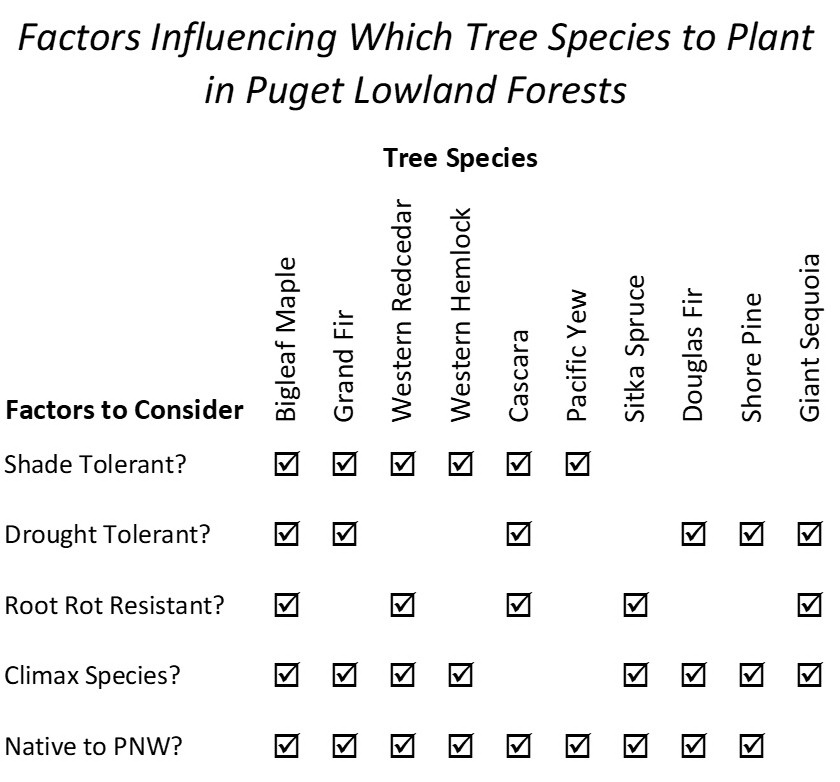Choosing the Right Trees to Plant in Our Urban Forests
In my previous blog, I discussed the idea that it only makes sense to plant trees in forests that are in a state of overall biomass decline, “phase two forests,” and only if they lack enough new trees of preferred species regenerating naturally. In the Puget Lowlands, we have many phase two forests where the Red Alder and Bigleaf Maple have reached the end of their life spans and mature conifers are succumbing to root rot, and for various reasons these forests often lack good replacement trees coming up in the understory. Thus, we have opportunities to plant many trees in our urban forests, but what species should we choose?
Though phase two forests by definition have gaps in the canopy from the deaths of mature trees, the amount of direct summer sunlight reaching any one spot on the forest floor is at most a couple hours a day. Thus, any tree planted in the forest must be shade tolerant. Six shade-tolerant species in our region are Bigleaf Maple, Pacific Yew, Cascara, Western Redcedar, Western Hemlock, and Grand Fir, but none are perfect choices because of other factors.

Bigleaf Maple
Bigleaf Maple survives shade and summer drought, but it really needs full sun and ample moisture to grow to full size. Also, Bigleaf Maple sprouts grow readily from seed, so that there are often plenty of saplings already growing in Puget Lowland forests.
Yew and Cascara
Though Yew and Cascara are beautiful small trees, they are not “climax” species that will eventually grow tall enough to reach the sun-filled canopy with the big trees.
Western Hemlock and Western Redcedar
Neither Western Hemlock nor Western Redcedar are drought tolerant, a factor becoming even more important in the face of climate change. Extended periods of abnormally low precipitation are expected throughout this century with summer precipitation decreasing by as much as 30% by the year 2100.
Grand Fir
Grand Fir appears to be the only native conifer that is both moderately shade tolerant and drought resistant, but it is not resistant to root rot. Western Redcedar is resistant, Western Hemlock is often infected but usually survives, but Grand Fir is susceptible.
So where does this leave us?
Since there is no perfect species to plant in our urban forests, the best strategy is probably to plant a mix. I exchanged emails with Rick Bailey, the Forest Management Program Supervisor with the City of Bellevue, who wrote, “We have been planting Grand Fir in our natural areas for many years and it has done really well once established. Aside from Western Hemlock and Western Redcedar, we like to plant Grand Fir and Cascara in shady areas.” Thank you, Rick. I’ll let you have the last word.
